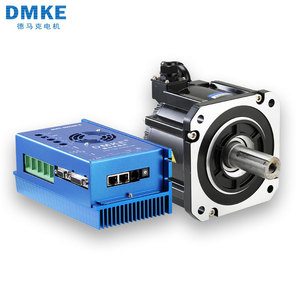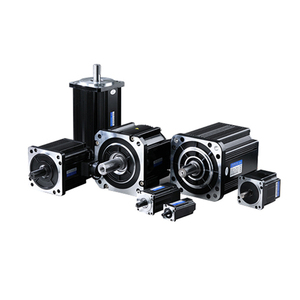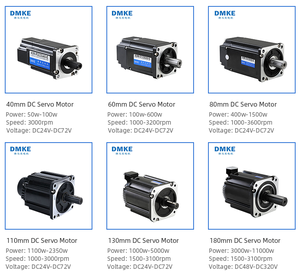Types of Electric Motor for Kayak
An electric motor for a kayak refers to a small, lightweight motor designed to propel a kayak using electricity instead of fossil fuels. These motors are typically used for fishing kayaks, recreational kayaks, or even for touring kayaks where quiet and environmentally-friendly propulsion is desired. The motors are usually mounted onto the kayaks through simple and minimalistic mounting systems so as not to interfere with the kayaks' paddling capabilities in case they need to be paddled manually. Electric motors for kayaks come in different types, including;
- Transom Mount Motors: These motors are mounted on the transom, which is the flat part on the rear end of the kayak. They are similar to small electric outboard motors and are popular because they are easy to install and provide a straightforward propulsion system. The motors come with a mounting bracket that can be adjusted to fit different kayaks' transom heights and widths. Additionally, the motors offer varying thrust levels, which are suitable for different types of kayaks and water conditions. Moreover, these motors are ideal for kayaks that do not have a suitable place for in-kayak mounting motors.
- Bow Mount Motors: Bow mount motors are mounted at the front of the kayak. They provide an even distribution of weight across the kayak, which enhances stability and maneuverability. These motors are permanent fixtures and can only be used on kayaks that allow for permanent mounting. However, they offer a quiet operation, which makes them ideal for fishing and other activities that require stealth. Also, the motors come with multiple speed settings and the ability to move in different directions, which allows for precise control of the kayak.
- High-Angle Mount Motors: They are a type of electric motor specifically designed for kayaks and are mounted on a high-angle motor kit. These motors are suitable for kayaks with a sloping rear deck or those that cannot accommodate standard transom motors. They provide a unique solution for kayaks with unique design challenges. Like other motors, they come with different power and thrust ratings. Also, they are easy to install and operate.
Scenarios of Electric Motor for Kayak
Electric motors for kayaks have revolutionized how enthusiasts engage with the waters, offering efficiency and versatility across various scenarios. Here are some of the key application areas:
- Fishing: Silent electric motors are a game changer for kayak anglers. The stealthy operation of these motors helps to maintain a low profile on the water, allowing fishermen to reach their favorite spots without scaring away potential catches. Moreover, with an electric motor's precise control and maneuverability, anglers can effortlessly navigate around structures such as weed beds, fallen trees, or docks. This adaptability enables them to position their kayaks with pinpoint accuracy, facilitating a more effective casting and trolling experience. Additionally, the extended battery life of these motors allows for prolonged fishing excursions, ensuring that fishermen can spend more time fishing and less time paddling.
- Recreational Paddling: For recreational paddlers, electric motors offer an unparalleled experience. Imagine gliding smoothly across serene lakes or navigating the winding waterways of a coastal estuary with effortless ease. An electric motor for a kayak provides that very experience, transforming the way people enjoy paddling. The subtle hum of the motor beneath them, combined with the tranquility of nature, creates a harmonious blend that is simply mesmerizing. Moreover, these motors eliminate the fatigue associated with traditional paddling, allowing paddlers to explore new areas and enjoy longer excursions. Whether it's a leisurely paddle on a calm lake or an exhilarating adventure through challenging waterways, electric motors have become an essential tool for paddlers seeking both comfort and excitement.
- Touring: Electric motors have become indispensable for touring kayakers who embark on long journeys. These motors provide the necessary thrust to tackle strong currents and headwinds, making the journey more manageable. With an electric motor, touring kayakers can maintain a steady pace, conserving energy for other essential tasks such as setting up camp or preparing meals. Additionally, electric motors enable touring kayakers to cover greater distances in less time, allowing them to explore new regions and experience different cultures along the waterways. Furthermore, the compact and lightweight design of these motors makes them easy to transport and store, ensuring that touring kayakers always have a reliable source of propulsion on their adventures.
- Rescue Operations: Electric motors have become a vital tool for emergency responders in water rescue operations. These motors provide swift and precise movements, allowing rescue personnel to navigate through treacherous waters and reach those in need of assistance. With an electric motor, water rescue personnel can maneuver around obstacles such as fallen trees, rocks, or debris, ensuring a safe and efficient rescue operation. Moreover, electric motors are silent, minimizing disturbances in sensitive environments. This feature is crucial during high-pressure rescue situations, where maintaining a calm and quiet atmosphere is paramount. Additionally, electric motors are environmentally friendly, producing zero emissions, making them an ideal choice for eco-sensitive rescue operations.
How to choose an electric motor for a kayak
When choosing an electric motor for a kayak, the following factors should be carefully considered:
- Kayak Compatibility: Not all motors will suit every kayak. Some motors are designed to be mounted on specific kayaks. For instance, a motor made for a fishing kayak may not work well with a recreational kayak. Therefore, it is crucial to check the compatibility of the motor with the kayak. Also, the motor's weight should be balanced with the kayak's capacity. If an unsuitable motor is used, it can damage the kayak or cause it to perform poorly.
- Motor Power and Thrust: The kayaker's needs determine the motor power and thrust required. A powerful motor is necessary for those who want to use the kayak for fishing in deep waters. On the other hand, a less powerful motor is sufficient for those using the kayak for short trips on calm waters.
- Mounting and Installation: The simplicity of mounting and installation is crucial. Some motors require complex installation processes, while others can be easily mounted and dismounted. Those who do not want a permanent motor setup should go for motors that are easy to install and uninstall.
- Battery Life and Range: A motor's battery life and range should also be considered. A motor with a long-range is ideal for those who want to use the kayak for long trips. Although motors with long-range are more expensive, they are worth the investment. This is because they allow users to travel longer distances without having to recharge frequently.
Functions, Features and Design of Electric Motors for Kayaks(Combined)
Electric motors for kayaks come in different designs alongside features that are tailored to enhance performance, efficiency, and user-friendliness. Here are some of the functions, features and designs of electric motors for kayaks:
-
Lightweight and Compact Design
Manufacturers design electric motors for kayaks to be lightweight and compact. This makes the motors easy to handle and install. Their design also ensures that they are simple to store in kayaks when not in use. Their small size and lightweight design minimizes the kayaks' overall weight.
-
Quiet Operation
Most electric kayak motors operate quietly. The quiet operation feature protects the marine life and serenity of the kayaking environment. This feature makes electric motors for kayaks desirable for fishing and explorative kayaking activities.
-
Adjustable Mounting Systems
Manufacturers design electric motors for kayaks with adjustable mounting systems. These systems offer universal fit and compatibility. They are simple to install in different kayak models and motorized kayak conversion kits. The adjustable mounting systems ensure motors are securely mounted, offering stability and preventing slippage during operation.
-
Variable Speed Control
Electric motors for kayaks come with variable speed control options. These options provide users with the ability to adjust the speed of the motor to match their preferences and requirements. The variable speed control enhances efficiency and improves maneuverability in various water conditions.
-
Efficient Battery Systems
Electric motors for kayaks use efficient battery systems. These systems are designed to be long-lasting and waterproof. They have a high energy density that allows for extended usage times. Efficient battery systems eliminate the need for frequent recharging.
-
Maintenance-Free Operation
Most electric motors for kayaks operate with maintenance-free features. They have sealed components that protect the motor and electronic systems from water damage and debris. This reduces the need for regular maintenance, enhancing convenience.
-
Eco-Friendly Operation
Electric motors for kayaks operate in eco-friendly environments. They are designed to reduce carbon emissions. This ensures that the serenity of the kayaking environment is preserved. The eco-friendly operation also promotes sustainable kayaking practices.
Q&A
Q1: What are the different kinds of motors for kayaks?
A1: There are various types of motors for kayaks. They include the brushless DC motors, AC induction motors, permanent magnet synchronous motors, and brushd DC motors. The brushless DC motor is efficient, quiet, and low-maintenance. The AC induction motor is powerful and rugged and needs high maintenance. The permanent magnet synchronous motor is efficient and compact, while the brushed DC motor is simple and easy to control but less efficient.
Q2: What is the function of an electric motor in a kayak?
A2: The electric motor's function in a kayak is to provide propulsion, making it easier to paddle through the water. The electric motor also helps to conserve energy, making it a more efficient option for moving through the water. In addition, an electric motor can help to move a kayak faster than a traditional paddle kayak.
Q3: What factors affect the performance of an electric motor for a kayak?
A3: The performance of an electric motor for a kayak is affected by various factors, such as load, voltage, temperature, and maintenance. These factors affect how well the electric motor works, its durability, and its efficiency.
Q4: How do buyers know what kind of electric motor to choose for their kayaks?
A4: To choose the right electric motor for a kayak, consider the kayak's size and weight, the desired speed and performance, the type of water it will be used in, and the power source for the motor. In addition, think about the type of fishing done to determine the kind of motor suitable for the kayak.













































































































































































































